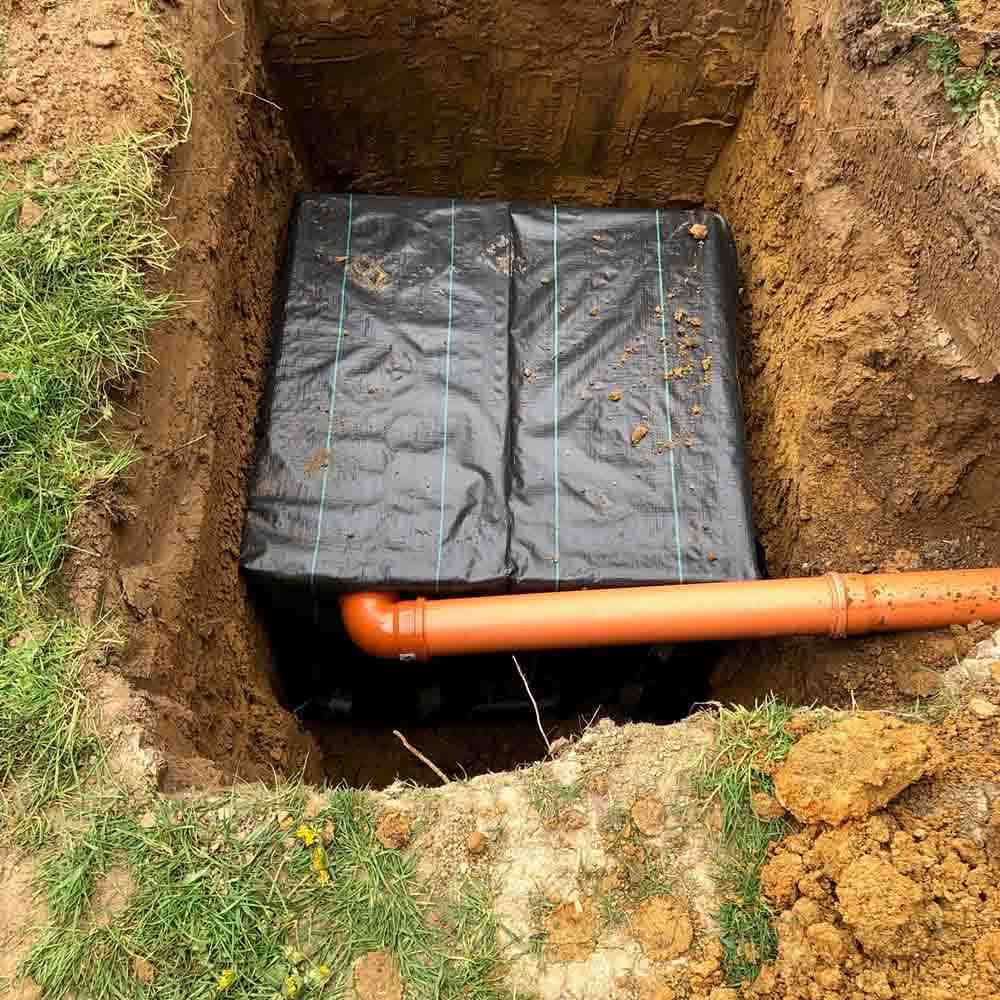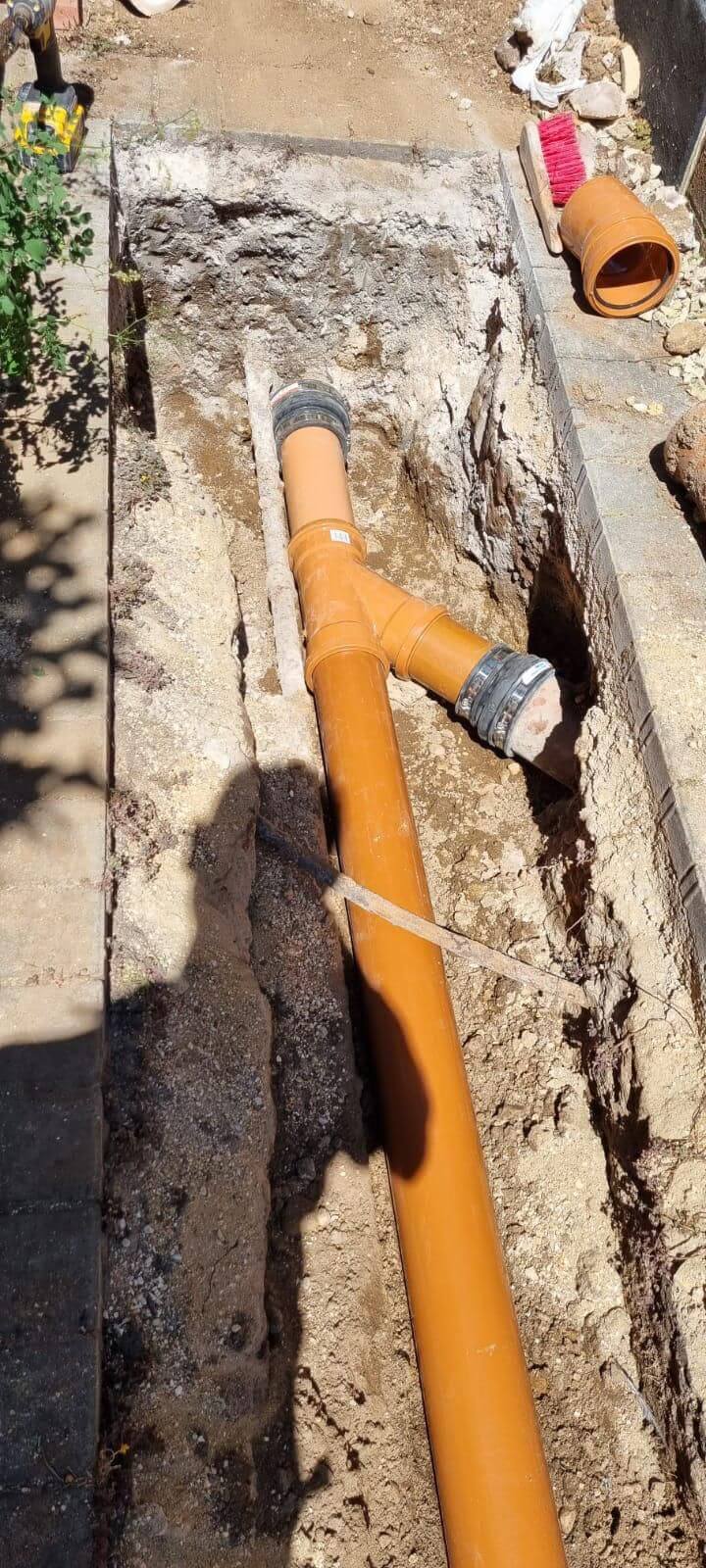- Oxfordshire
- Sussex
- Surrey
A soakaway drainage system is an underground pit that collects runoff from surfaces like driveways and roofs. This system stores the water and allows it to percolate through the soil, making your property self-sufficient for managing rainwater soakaway. A well-installed soakaway drainage system not only ensures proper water management but also enhances the overall stability of your property by eliminating the risks of flooding. However, improper installation can render the soakaway drain ineffective, resulting in wasted time and money.
With modern advancements, soakaway drainage systems are more durable and efficient than ever. However, the success of the soakaway installation depends on the quality of the soakaway installation and the correct choice of materials.
Before proceeding with the soakaway installation, there are key checks you need to complete.
Percolation Test
A percolation test is essential before installing a rain soakaway system. This test evaluates the soil’s absorption capacity, ensuring it can handle the water flow. If the soil absorbs water too slowly, a rain soakaway may not function effectively; therefore, a professional should be hired to conduct the test.
Design Parameters
Once the percolation test is completed, you need to define the design parameters for the drain soak away system. This includes determining the depth and size of the soakaway pit, as well as the volume of rainwater it needs to handle based on your property’s roof angle and surface area. Ensure careful planning to avoid compromising the effectiveness of the drain soak away system.
After defining the design parameters, the next step is selecting the materials for your rain soakaway. Traditionally, gravel was used to fill soakaway pits, but newer drain soak away systems use soakaway crates, which are more durable, space-efficient, and provide better retention and faster percolation. These materials help ensure the drain soak away system performs effectively over time.
To ensure a proper soakaway installation, it’s important to engage professional contractors. The installation process involves several key steps:


Book your appointment for a soakaway drainage or soakaway drain service online by simply filling out the "request a service" form.

After reviewing your request, our team will contact you to confirm details and assess the best rainwater soakaway or drain soak away solution for your soakaway installation.

We arrive at your location on time to handle any soakaway installation, unclogging the soakaway drain, and ensuring the rain soakaway system works efficiently, providing professional results.


Fast Drains has highly experienced and specialised teams to take care of any kind of drain-related services. We provide complete services from design considerations to the installation of a soakaway drainage system at a highly affordable price. Whether you need a rainwater soakaway or a standard soakaway installation, our experts are ready to help. If you are looking for a reliable and expert service to install a soakaway drain at your residential or commercial property, contact us today.

A soakaway drainage system refers to the construction of an underground pit, which is then filled with permeable material to allow rainwater soakaway or surface water to percolate through it and into the soil. This system helps manage excess water, allowing the soakaway drain to release the water back into the earth.
Yes, according to building regulations introduced in 2001, it is mandatory to install a soakaway or similar drain soak away drainage structure for all new properties.
A soakaway should be constructed at a distance of at least 5 metres from the property to ensure proper soakaway drainage and avoid compromising the foundation.
A soakaway should be between 1.3m and 1.6m in depth. Please note that the deeper you dig, the more it can compromise the stability of your property and the effectiveness of the drain soak away system.
Yes, the soakaway needs to be emptied and maintained regularly to ensure it functions properly and to prevent blockages caused by dirt or other material accumulation in the drain soak away system.
Areas we cover
Basingstoke | Southampton | Guildford | Bournemouth | Poole | Portsmouth | Crawley | Dorchester | Peterborough | Newbury | Christchurch | Gillingham | Swindon | Winchester | Reading | Oxford | Slough | Abbotswood | Sterte | Ascot | Stoughton | Broadstone.